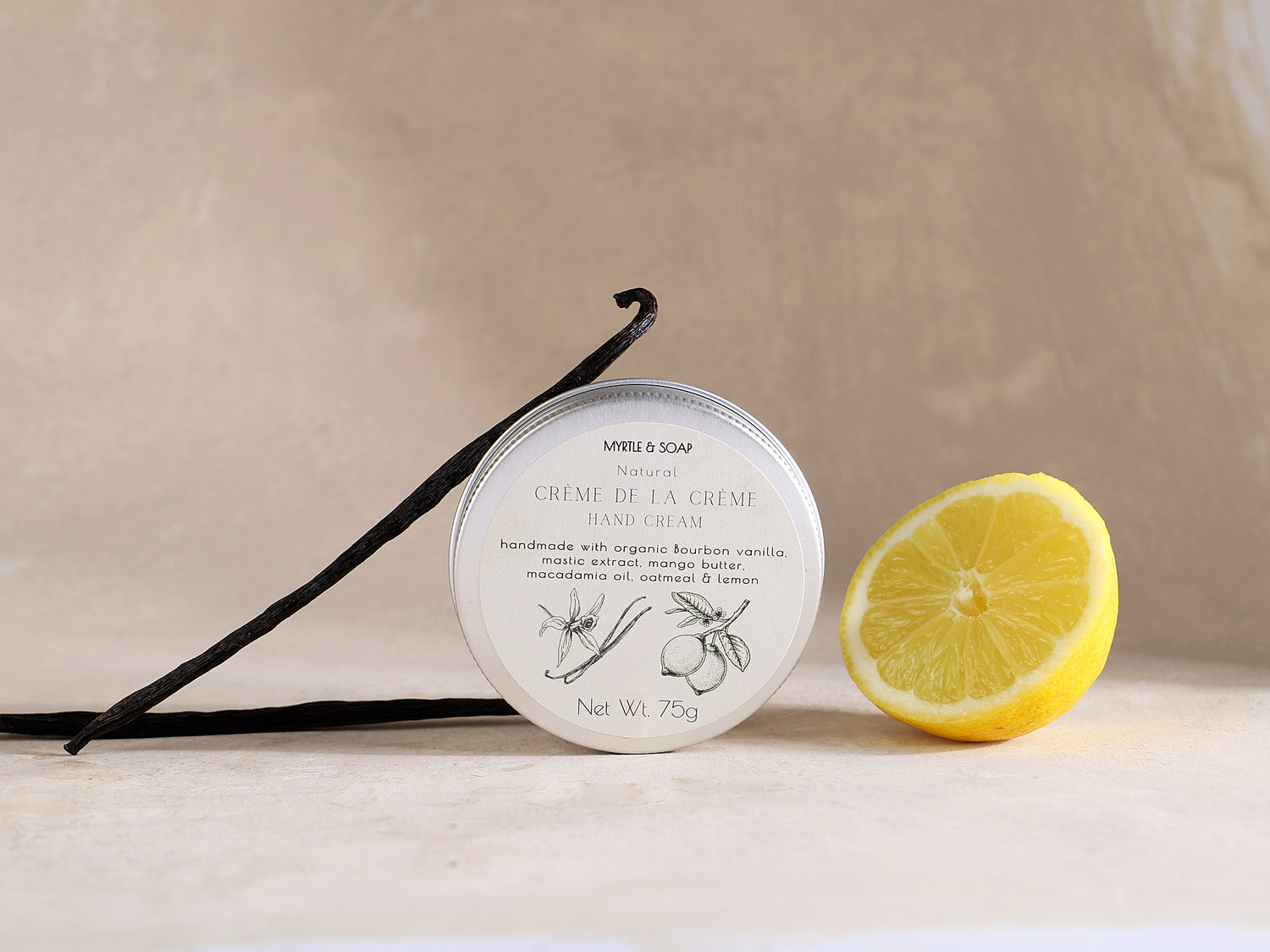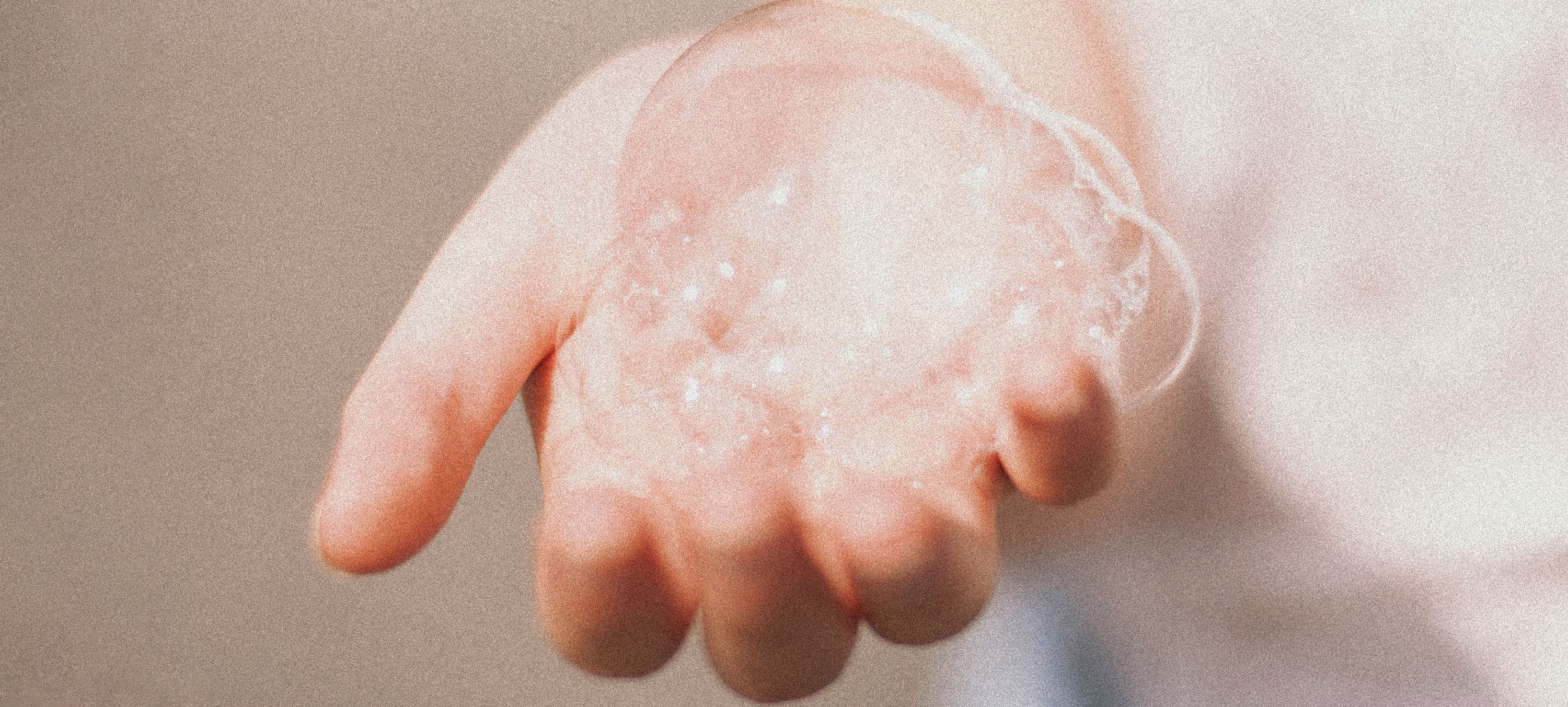What are sulfates?
Sulfates are a group of surfactants (cleansing agents) very often used in personal and household cleansing products. Surfactants work by attaching the dirt molecules to themselves and removing them when they are rinsed off with water.
You may have come across some or all of the following commonly used sulfates in cosmetics products:
- Sodium Lauryl Sulfate (SLS)
- Sodium Laureth Sulfate (SLES)
- Ammonium Lauryl Sulfate (ALS)
- Ammonium Laureth Sulfate (ALES)
You will often find them in the ingredient lists of your shampoos, bath products, household cleaning products, soaps and even in your toothpaste.
Sodium Lauryl Sulfate - SLS
A lot of misinformation has been circulating about SLS in particular, such as the claim that it causes hair loss or that it is carcinogenic. These are not scientifically proven claims and we do not want to continue propagating misinformation.
However we would like to explain the main two reasons why we do not use sulfates in any of our products.
#1 SLS (Sodium Lauryl Sulfate) and ALS (Ammonium Lauryl Sulfate) may be skin and eye irritants
Studies have shown that SLS and ALS have the potential for being irritating to skin and eyes, with the irritation potential increasing with increasing concentration of SLS in the product.
The CIR (Cosmetic Ingredient Review) concluded that SLS and ALS are safe to use in products meant for brief, discontinuous use.
The potency for skin irritation entirely depends on the formulation in question and therefore has to be evaluated on a case by case basis.
Given the irritation potential of SLS and ALS and the fact that they are in general quite harsh surfactants, we do not find them suitable for people with dry, sensitive skin, flaky or damaged skin.
We, as a company, choose to stay away from sulfates completely.
#2 Ethoxylated sulfates (SLES, ALES) may be contaminated with 1,4 dioxane
In order to make SLS (Sodium Lauryl Sulfate) and ALS (Ammonium Lauryl Sulfate) less harsh for the skin they are converted into SLES (Sodium Laureth Sulfate) and ALES (Amonium Laureth Sulfate) through a process called ethoxylation. Ethoxylation is the process in which ethylene oxide, a known carcinogen, is used to alter chemicals like SLS.
A dangerous by-product of this process is 1,4 dioxane, a substance classified as a possible human carcinogen (while being a known animal carcinogen) by the IARC (International Agency for Research on Cancer). As 1,4 dioxane is not directly an ingredient that goes into the products but rather a by-product of manufacturing, it is never listed on the product labels.
A study conducted by Campaign for Safe Cosmetics found that 67% of the 48 childrens’ bath products they tested contained 1,4 dioxane.
The Organic Consumers Association conducted a similar study and tested 100 household and cosmetics cleansing products. They found that about 50% were indeed contaminated with 1,4 dioxane.
The danger of 1,4 dioxane and ethylene oxide contamination is present when ethoxylated substances like SLES are used in formulations, usually denoted with chemical names ending in -eth (eg., laureth, ceteareth, oleth, myreth, steareth). Other ethoxylated substances to avoid are ingredients containing the names PEG, PPG or polysorbate.
In principle, non-ethoxylated surfactants like SLS and ALS should not be contaminated with 1,4 dioxane. However, cross-contamination of SLS during manufacturing can occur and it is up to manufacturers to decide if they will undertake tests to ensure their non-ethoxylated surfactants have not been cross-contaminated with 1,4 dioxane.
The International Cooperation on Cosmetics Regulation (ICCR) and the Scientific Committee on Consumer Safety (SCCS) have suggested a 1,4 dioxane limit of up to 10 ppm (parts per million) in cosmetics products in order for them to be considered safe for the consumer.

Our Verdict
We would also like to note that given the potential of SLS for skin irritancy at high concentrations, we personally find solid (syndet) shampoo bar formulations made with SLS concentrations sometimes as high as 80% or 90% simply unacceptable.
We choose to formulate our products without the use of sulfates. More specifically, our Lemon Myrtle Shampoo is completely sulfate-free and formulated with mild, plant-derived surfactants that gently cleanse the hair and scalp.
SHOP NOWCollapsible content
References
1 Bondi, Cara Am et al. “Human and Environmental Toxicity of Sodium Lauryl Sulfate (SLS): Evidence for Safe Use in Household Cleaning Products.” Environmental health insights vol. 9 27-32. 17 Nov. 2015, doi:10.4137/EHI.S31765
2 Sodium Lauryl Sulfate, ChemicalSafetyFacts.org
3 De Jongh, Cindy M et al. “Stratum corneum cytokines and skin irritation response to sodium lauryl sulfate.” Contact dermatitis vol. 54,6 (2006): 325-33. doi:10.1111/j.0105-1873.2006.00848.x
4 Dahl, M V, and R J Trancik. “Sodium lauryl sulfate irritant patch tests: degree of inflammation at various times.” Contact dermatitis vol. 3,5 (1977): 263-6. doi:10.1111/j.1600-0536.1977.tb03672.x
5 Lammintausta, K et al. “Irritant reactivity in males and females.” Contact dermatitis vol. 17,5 (1987): 276-80. doi:10.1111/j.1600-0536.1987.tb01477.x
6 Sodium Lauryl Sulfate and Ammonium Lauryl Sulfate, CIR
7 1,4 Dioxane, Campaign for Safe Cosmetics
8 The Dirty Dozen: Sodium Laureth Sulfate, David Suzuki Foundation
9 No More Toxic Tub: Getting Contaminants out of Children's Bath & Personal Care Products, Campaign for Safe Cosmetics
10 Natural Consumer Products Found Contaminated with Cancer-Causing 1,4-Dioxane in Groundbreaking Analysis Released by OCA, Organic Consumers Association
11 Ethoxylated ingredients, Campaign for Safe Cosmetics
12 SCIENTIFIC OPINION ON The Report of the ICCR Working Group: Considerations on Acceptable Trace Level of 1,4-Dioxane in Cosmetic Products, Scientific Committee on Consumer Safety (SCCS)
13 Hidden Carcinogen Taints Tap Water, Consumer Products Nationwide, Environmental Working Group


